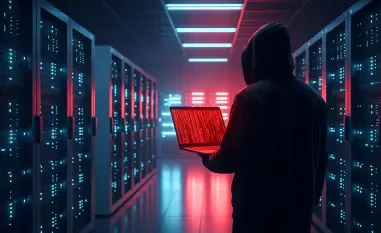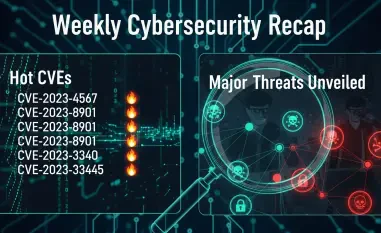Public entities, such as local governments, state agencies, public universities, and school divisions, face unique challenges in responding to cybersecurity incidents, particularly ransomware attacks. The increasing frequency and sophistication of these attacks necessitate a proactive and comprehensive approach to incident response. This article provides practical legal and policy measures that organizations can adopt to mitigate risks and navigate the chaotic aftermath of such events effectively.
Planning for the Worst-Case Scenario
Expecting Class Action Lawsuits
Preparing for the possibility of class action data breach lawsuits following a ransomware attack is essential for public entities. This preparation involves assuming the worst possible outcome and taking steps to protect the investigation under attorney-client privilege. By doing so, organizations can avoid having the entire investigation being discoverable in later litigation. Proactive measures must be taken to ensure that sensitive information remains confidential and protected throughout the entire process.
One crucial step for public entities is conducting risk assessments and identifying potential loopholes in their cybersecurity framework. By assessing vulnerabilities and implementing robust security measures, they can significantly reduce the likelihood of ransomware incidents. However, should an attack occur, having legal strategies in place to manage the aftermath is paramount. Engaging external legal counsel from the outset helps ensure the investigation is conducted with the utmost confidentiality, preserving attorney-client privilege and safeguarding sensitive information from being exposed in potential lawsuits.
Engaging Outside Cybersecurity Counsel
Engaging outside cybersecurity counsel to lead the incident investigation is a critical legal strategy that public entities should adopt. This approach serves to safeguard the details of the investigation from being exposed in future lawsuits, protecting the organization’s interests and reputation. The role of cybersecurity counsel encompasses coordinating the technical response team, approving official communications, and ensuring compliance with various legal obligations during and after the incident.
The importance of involving legal experts extends beyond just the technical aspects of the investigation. They play a pivotal role in navigating the complex legal landscape that follows a ransomware attack. This includes understanding and adhering to data protection laws, notification requirements, and regulatory compliance. Having legal counsel to oversee the investigation ensures that all necessary steps are taken to protect the organization while maintaining transparency and accountability throughout the process. It also helps public entities avoid potential pitfalls that could arise from missteps in handling the incident.
Legal Considerations and Confidentiality
Protecting Investigation Details
To maintain confidentiality and protect sensitive information, public entities should involve legal counsel from the outset of a cybersecurity incident. This involvement ensures that the investigation is conducted under attorney-client privilege, shielding it from potential legal exposure. The presence of legal counsel provides a layer of protection that is critical for managing the myriad complexities associated with a ransomware attack, including understanding the legal ramifications of different actions taken during the response.
Beyond the immediate investigation, legal counsel can provide invaluable insight into how to communicate effectively with various stakeholders while balancing the need for transparency with the necessity of protecting sensitive information. As public entities manage the chaotic aftermath of a ransomware attack, having a clear legal strategy in place is essential. This includes drafting and reviewing public statements, internal communication policies, and ensuring that all actions are in line with legal obligations. By doing so, the organization can protect itself from potential legal ramifications and foster a sense of control over the situation.
Compliance with Legal Obligations
Legal counsel plays a vital role in ensuring that the organization complies with various legal obligations during a cybersecurity incident. This includes understanding and adhering to notification requirements, data protection laws, and other relevant regulations. The legal landscape surrounding cybersecurity incidents is constantly evolving, and having experts who can navigate these changes ensures that public entities remain compliant and are not caught off guard by new requirements or obligations.
Public entities must also consider the broader implications of a ransomware attack and how it affects their stakeholders, including employees, clients, and the general public. Legal counsel can assist in crafting statements and notifications that meet legal requirements while conveying the organization’s commitment to resolving the issue and protecting affected individuals. This nuanced approach helps manage public perception and legal liability, ensuring that the organization is seen as taking decisive and responsible action in the face of a cybersecurity incident.
Strategic Communication
Thoughtful Messaging
During a cybersecurity incident, the importance of thoughtful and transparent messaging cannot be overstated. Missteps in communication, such as prematurely labeling an incident as a “hack” or “breach,” can trigger immediate notification requirements and legal obligations. Public bodies must craft their messaging carefully to avoid unnecessary legal repercussions. By controlling the narrative and being clear and precise in their communication, public entities can manage public expectations and maintain trust while mitigating potential legal exposure.
Effective communication strategies involve collaboration between technical experts and legal counsel to ensure that all statements are accurate and aligned with the overall response strategy. This collaborative approach helps prevent miscommunication and ensures that all messaging is consistent, clear, and appropriately tailored to the audience. By being transparent yet cautious, public entities can convey their commitment to addressing the incident and protecting those affected without creating additional legal or reputational risks.
Transparency and Public Perception
Transparent communication is essential to managing public and legal expectations. Public entities must ensure that their messaging conveys a commitment to protecting the impacted individuals while avoiding statements that could lead to legal complications. This balance is crucial in maintaining public trust and demonstrating accountability. Transparency does not mean disclosing every detail but rather providing enough information to satisfy legal requirements and reassure stakeholders that the situation is being handled responsibly.
Public perception plays a significant role in the aftermath of a ransomware attack, and how an organization communicates during this time can greatly influence its reputation. By being upfront about the steps being taken to resolve the issue, public entities can build credibility and foster a sense of trust among affected parties. This approach not only helps manage the immediate fallout but also positions the organization favorably in the long term. Stakeholders are more likely to remain supportive if they feel that the organization is being honest and proactive in its efforts to handle the situation.
Evaluating and Updating Policies
Regular Policy Reviews
An organization’s incident response policies and procedures are crucial and likely to be scrutinized during an investigation. Regular reviews of these documents with legal counsel help identify and rectify any weaknesses or inconsistencies. Ensuring that the policies align with the organization’s risk profile can prevent them from being used against the public body in future legal challenges. By keeping policies up to date, public entities can demonstrate their commitment to maintaining robust cybersecurity measures and reducing vulnerabilities.
In addition to legal review, it is essential for public entities to conduct regular drills and simulations to test their incident response policies. These exercises help identify potential gaps and provide valuable insights into how the policies perform under real-world conditions. By continuously refining and updating their policies, public entities can enhance their preparedness and effectiveness in responding to ransomware attacks. This proactive approach not only strengthens their defenses but also helps build a culture of continuous improvement and vigilance within the organization.
Aligning Policies with Risks
Public entities must ensure that their incident response policies are aligned with their current risk profile. This alignment involves updating policies to reflect the latest threats and vulnerabilities, as well as incorporating lessons learned from past incidents. The cybersecurity landscape is ever-changing, and maintaining flexible and adaptive policies allows public entities to stay ahead of potential threats. Regularly revisiting and revising these policies with input from technical and legal experts ensures that they remain relevant and effective.
Furthermore, aligning policies with current risks requires a comprehensive understanding of the organization’s unique threat landscape. Public entities must conduct regular risk assessments to identify new vulnerabilities and emerging threats. By doing so, they can prioritize their efforts and allocate resources effectively to address the most critical risks. Incorporating insights from these assessments into policy updates ensures that the organization remains resilient and prepared to tackle the evolving challenges posed by ransomware attacks.
Technical Vulnerabilities and Investments
Addressing Legacy Systems
Legacy systems, which are no longer supported by manufacturers and therefore not patched for new malware, pose significant risks. Public entities must prioritize upgrading these systems to mitigate vulnerabilities and enhance their cybersecurity defenses. Failure to address these outdated systems can leave an organization exposed to attacks, making it imperative to replace or upgrade them with more secure alternatives. Investing in modern and supported technology is a crucial step in reducing the overall risk of ransomware and other cyber threats.
Upgrading legacy systems involves not only replacing outdated hardware and software but also ensuring that the new systems are integrated seamlessly into the existing infrastructure. Public entities must plan and execute these upgrades carefully to minimize disruption and ensure that the new systems meet current security standards. Additionally, they should work closely with their IT and security teams to identify any potential vulnerabilities during the transition period and take proactive measures to mitigate them. By addressing legacy systems comprehensively, public entities can significantly enhance their cybersecurity posture and reduce the likelihood of successful ransomware attacks.
Implementing Multi-Factor Authentication
Implementing multi-factor authentication (MFA) is an essential step in strengthening cybersecurity defenses. MFA adds an extra layer of security, making it more difficult for attackers to gain unauthorized access to systems and data. Public entities should prioritize the adoption of MFA across all critical systems and applications, ensuring that users are required to provide multiple forms of verification before gaining access. This added security measure helps protect sensitive information and reduces the risk of successful cyberattacks.
Public entities must also educate their employees on the importance of MFA and provide training on how to use it effectively. User awareness and participation are crucial for the successful implementation of MFA, as employees play a vital role in maintaining the organization’s security posture. By fostering a culture of security awareness and ensuring that all users understand the benefits and requirements of MFA, public entities can create a more resilient cybersecurity environment. Additionally, regular reviews and updates to MFA policies and technologies are necessary to keep pace with evolving threats and ensure continued security.
Proactive Management of Cybersecurity Risks
Comprehensive Preparation
Proactive management of cybersecurity risks through comprehensive preparation is essential in the face of increasingly sophisticated ransomware attacks. This approach involves engaging legal counsel, crafting strategic communications, regularly updating policies, and addressing technical vulnerabilities. By taking a holistic and proactive approach to cybersecurity, public entities can reduce the likelihood of successful attacks and be better prepared to respond effectively when incidents occur.
Comprehensive preparation also includes conducting regular cybersecurity training for employees, fostering a culture of vigilance and awareness throughout the organization. Employees are often the first line of defense against cyber threats, and equipping them with the knowledge and skills to recognize and respond to potential risks is vital. Additionally, public entities should establish strong incident response teams and protocols, ensuring that all stakeholders understand their roles and responsibilities during a cybersecurity incident. By being well-prepared and proactive, public entities can significantly enhance their resilience and ability to manage the complexities of ransomware attacks.
Strengthening Resilience
Strengthening resilience is crucial for maintaining public trust and safeguarding sensitive information. Given the stakes, investing in preparedness and response planning is not just advisable but essential for these public entities to continue operating effectively and securely.













